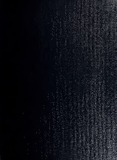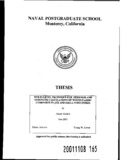Random wave forces on a free-to-surge vertical cylinder
| dc.contributor.author | Sajonia, Charles Blake | |
| dc.date.accessioned | 2012-11-27T18:07:25Z | |
| dc.date.available | 2012-11-27T18:07:25Z | |
| dc.date.issued | 1988 | |
| dc.identifier.uri | https://hdl.handle.net/10945/23103 | |
| dc.description | CIVINS (Civilian Institutions) Thesis document | en_US |
| dc.description.abstract | Building technologies and practices have emerged in recent years as alternatives to traditional design and construction in meeting cost, time, and quality goals of owners and builders. Some of these methods are used frequently in commercial construction markets, but are not yet widely accepted within U.S. Army Corps of Engineers (USACE) standard practice. The objective of the projects described in this report was to test two alternative construction methods and to evaluate their effectiveness in providing less costly facilities to the Army. These methods are: (1) One-Step Competitive ('Turnkey') Negotiation and (2) Architectural Fabric Structure technology. One-Step 'Turnkey' procedures differ from the traditional design-bid-build procedures. Rather than advertising a single design for competitive building, the Government solicits proposals for the design-plus-construction price. A construction contract is awarded based on a proposal's price as well as other factors such as technical qualities or life-cycle cost benefits (not necessarily low price alone). Four military projects from the FY84 Military Construction, Army (MCA) program were chosen for Architectural Fabric Structure tests. The fabric structures involved in this test were the tensioned membrane type, in which a fabric membrane is supported by rigid structural members and prestressed to achieve its load-carrying capacity. Air-supported structures were not considered in this test. Keywords: Cost effectiveness; Civil engineering. (kt) | en_US |
| dc.description.uri | http://archive.org/details/randomwaveforces1094523103 | |
| dc.language.iso | en_US | |
| dc.publisher | Monterey California. Naval Postgraduate School | en_US |
| dc.rights | This publication is a work of the U.S. Government as defined in Title 17, United States Code, Section 101. Copyright protection is not available for this work in the United States. | en_US |
| dc.subject.lcsh | Naval architecture | en_US |
| dc.title | Random wave forces on a free-to-surge vertical cylinder | en_US |
| dc.type | Thesis | en_US |
| dc.contributor.corporate | Texas A and M | |
| dc.description.funder | CIVINS | en_US |
| dc.identifier.oclc | ocn317062586 | |
| etd.thesisdegree.name | Master of Science | en_US |
| etd.thesisdegree.grantor | Texas A and M | en_US |
Files in this item
This item appears in the following Collection(s)
-
1. Thesis and Dissertation Collection, all items
Publicly releasable NPS Theses, Dissertations, MBA Professional Reports, Joint Applied Projects, Systems Engineering Project Reports and other NPS degree-earning written works. -
3. CIVINS (Civilian Institutions) Theses and Dissertations





